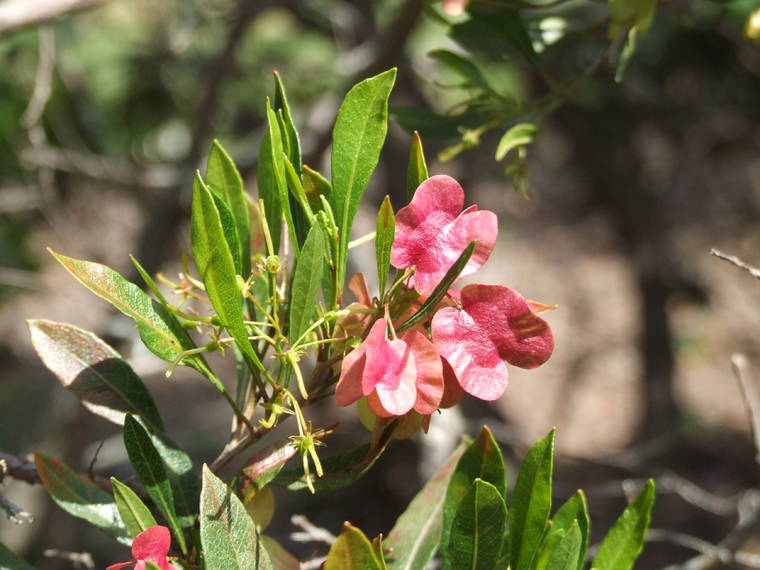Editor’s note: Each Wednesday, West Hawaii Today is publishing a story about individuals, groups or organizations that have helped make life better for others in our community during the COVID-19 pandemic.
The Hawaii Forest Institute (HFI) has been awarded a $10,000 grant to encourage Hawaii’s residents and businesses to grow Native Hawaiian and Polynesian-introduced (“canoe”) plants, as well as to increase public awareness of the value and benefits of planting native plants and trees.
The grant is funded by the Atherton Family Foundation. The project was launched in 2020 with a grant of $8,979 from the Kaulunani Urban and Community Forestry Program of the DLNR Division of Forestry and Wildlife; and State and Private Forestry, branch of the USDA Forest Service, Region 5.
The Go Native: Growing a Native Hawaiian Urban Forest project will promote the growing of Native Hawaiian and “canoe” plants by creating a series of videos and a quick reference guide. The videos will target a non-technical audience and will walk the viewer through the stages of creating or converting their landscape to native and/or Polynesian-introduced plants. The guide will teach gardeners, landscape architects, and others to identify the different native plants most suitable to their climate zone, personal tastes, gardening experience, and other factors.
“Our long-term goal is to create a series of kipuka or micro-forests within the urban and suburban core,” said Travis Idol, HFI president and professor of Tropical Forestry and Agroforestry at the University of Hawaii at Manoa. “Once we convince enough homeowners, renters, businesses and landscape architects to use more native Hawaiian and canoe plants in their landscaping, these Hawaiian gardens can collectively become a human-made surrogate for the natural forests that once existed in abundance, particularly in dryland and mesic areas.”
The funding from the Atherton Family Foundation is supporting ongoing work including the quick reference guide, tentatively called the #GoNativeHawaii Growing Guide. The guide will allow users to look up their growing zone to find recommended combinations of plants that they can grow in their zone and are more likely to flourish. It will also recommend plants based on other considerations such as the type of space and landscape function, and it will provide sample garden plans.
“We think of it as providing ‘cookie cutter recipes’ yet enabling people to substitute some ingredients (plants) in case they want more or less of a particular ‘taste,’” said Paul Arinaga, Go Native Project Manager.
To augment the guide and to show people what can be done, HFI has started a sub-project to document sites around the state where people are growing native Hawaiian plants, sometimes in combination with canoe plants. In addition, HFI has plans to launch a contest so homeowners can show off their native Hawaiian landscaping and inspire others.
The Native Hawaiian Urban Forest Network will offer innumerable benefits to Hawaii’s people and to the ‘aina such as providing a refuge for native animals; wildlife corridors for native invertebrates, birds and bats; preserving genetic variation within plant and animal species; and enhancing cultural and spiritual links with the past. Creating the Native Hawaiian Urban Forest Network could also help to increase the redundancy, representation and resiliency of existing natural forests. In addition, native plants may have a role to play in a world impacted by climate change.
“Contrary to common perception, there are native Hawaiian plants — particularly coastal and dryland plants — that can survive in harsh and urban conditions,” said Idol.
Restoring Native Hawaiian plants also has economic implications. Numerous experts interviewed by HFI have noted that the version of tropical or sub-tropical landscaping presented to tourists is often a generic one. A tourist can travel all over the world and see the same homogenized version of “tropical paradise” that uses non-native plants such as Monstera. At a time when Hawaii is searching for a new model of tourism – and tourists are looking for authentic experiences – native Hawaiian and canoe plants have an important role to play.
Perhaps Hawaii visitors would be interested in learning about plants that cannot be found anywhere else in the world.
“Our native flora and fauna can play an important role in marketing Hawaii as a truly unique destination,” said HFI Executive Director Heather Simmons.
The Hawaii Forest Institute’s (HFI) mission is to protect and perpetuate Hawaii’s forests through restoration, education, information dissemination, and support for scientific research. For more information on the project, visit www.hawaiiforestinstitute.org/our-projects/go-native-growing-a-native-hawaiian-urban-forest/
Know a Hometown Hero who should be highlighted next Wednesday? It can be anybody, from a youngster doing good for the community, to a professional helping with the COVID-19 pandemic, or even a kupuna! Please send your nominations to cjensen@westhawaiitoday.com with the subject: Hometown Heroes Nomination. Please include the hero’s name, contact information and what makes them a hero.



